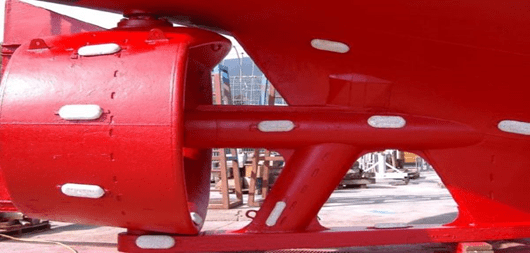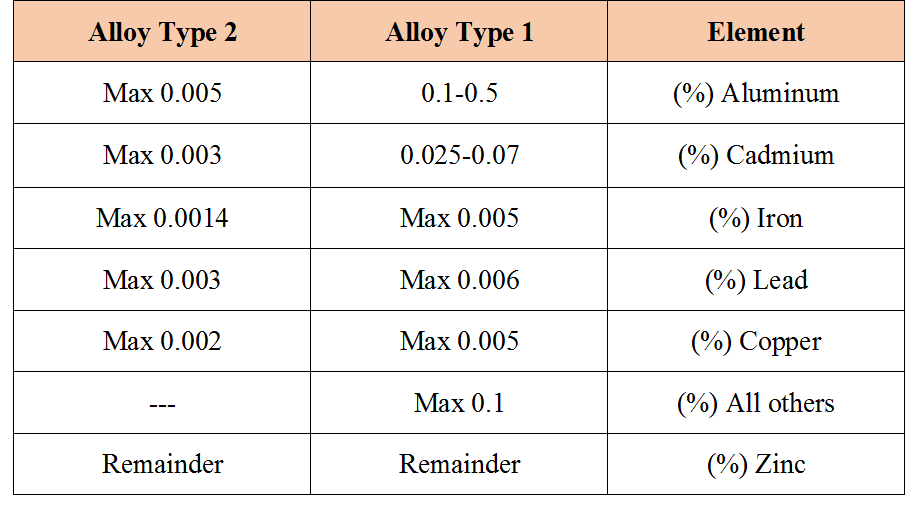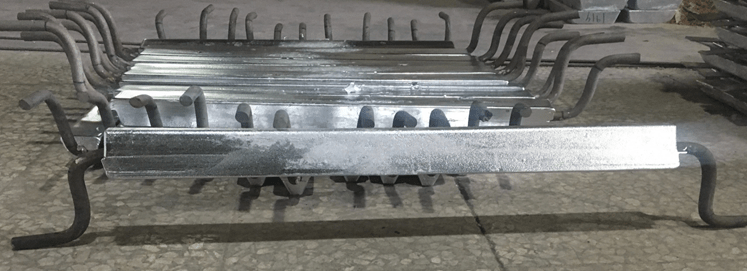

Zinc anode is used in two types of marine alloys (Type 1) for use in seawater and standard alloy (Type 2) for protection of structures floating in fresh water or structures buried in soil, in the cathodic protection section. In freshwater, the formation of a hydroxide layer on the surface of the anode blocks the flow, so zinc anode is recommended for use in salt water. It is most commonly used for offshore structures such as ships, tanks, cylinders and fins. Zinc anodes are also used to protect pipelines and underground tanks.

The standards used in the production process of zinc anodes are: ASTM-B 418, BS 7361, DNV-RP-B401, IPS-M-TP-750.
The chemical composition of zinc anode according to ASTM-B 418 standard is shown in the following table:

The zinc anode protects metals from corrosion using electrical potential properties, electrochemical capacity and alloy quality. According to BS 7361, its open circuit potential is about -1.05 v relative to the silver / silver chloride reference electrode and its electrochemical capacity is at least 780 Ah / kg. Zinc anode efficiency is about 90%. The electrochemical test of anode is performed according to DNV-RP-B401 standard and its results can be seen in the table below.

Zinc anode is made in different dimensions and shapes depending on the type of application.


Like other galvanic anodes, zinc anodes have advantages and disadvantages, some of which are mentioned below.
Advantages
Disadvantages:
Depending on the anode and its application, zinc anodes are connected to the structure using various methods such as welding, bolts and cables.
Technical Documents
Datasheet sample of trapezius zinc anode with weld connection (Gross Weight= 5kg)
Datasheet sample of rectangular zinc anode with weld connection (Gross Weight: 20kg)
Datasheet sample of zinc anode with bolt connection (Gross Weight: 9.7kg)
Sample report of chemical Analysis of Sacrificial Zinc Anode
Sample report of Electrochemical Analysis of Sacrificial Zinc Anode
All Rights Reserved for Tavanazob Sana'ati Kavir.